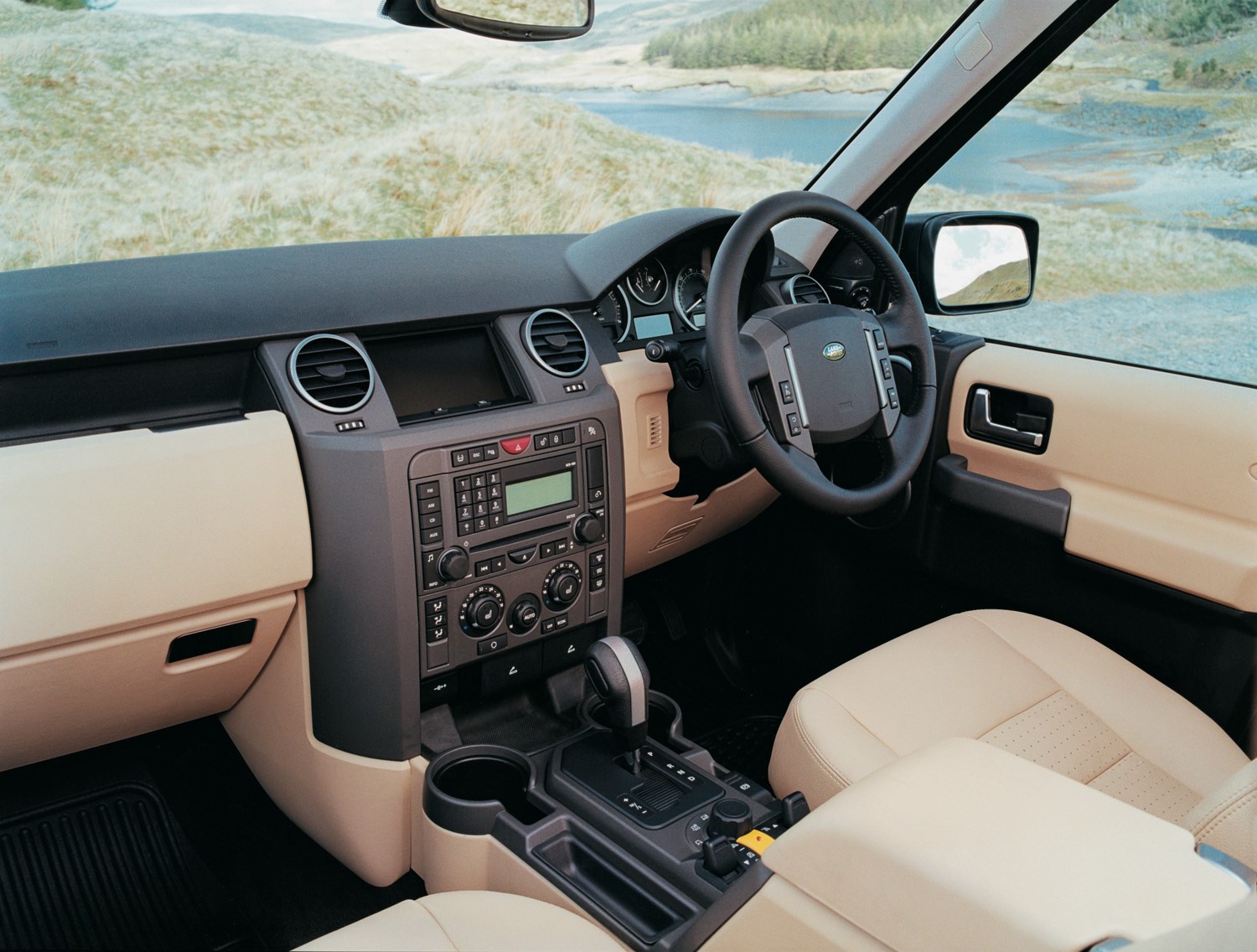Latest model
The only real changes that happened to the Discovery 3 during its lifetime occurred in 2008 with the introduction of a slightly revised model. Changes included a revised bumper, more body-coloured detailing and a new 19-inch alloy wheel design. Three new colours – Bournville, Galway Green and Santorini Black – were also introduced, while new interior trim was available alongside an updated Bluetooth system.
Land Rover would replace it with the Discovery 4 in 2009, which – though little more than a mid-life update – introduced new engines and more in the way of technology.
Value for money
By modern day standards, the Discovery 3’s starting price of less than £30,000 seems like terrific value for money. That said, some of the lower-spec models don’t get as much standard equipment as you might expect – missing out on features like leather upholstery and cruise control, which you’d expect on a model of this size and luxury.
When it comes to used examples today, very high-mileage but usable examples are available from just £4,000, though you’ll need to factor plenty more money into the running costs of one. You’ll have to double that budget for a tidy lower mileage model, while prices rise to more than £10,000 for the best versions.
Looks and image
Though the Discovery 3 might soon be two decades old, its design has aged remarkably well, and it still looks quite appealing even by modern standards. The huge dimensions and chunky, boxy shape also make it stand out on the road and it still has plenty of presence even next to far more modern rivals.
Inside is where the Discovery starts to show its age, wth old-fashioned dials, while the satellite navigation system fitted to higher-spec models has aged badly – as is the case with any system from this period, though. What can’t be faulted is the impressive quality and sturdiness to the interior – it truly feels built to last. If you fancy something a bit modern inside, though, it could be worth considering the Discovery 4 successor instead.
The Discovery 3 is also a very impressive performer behind the wheel. Granted, you won’t buy it for its sportiness, but where comfort and refinement are concerned, it remains superb. It’s also no less capable off-road, either – quite the opposite in fact, thanks to its impressive suite of rugged settings that are available.





